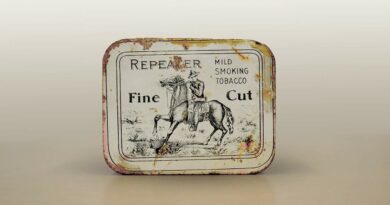CNC Machining Parts: A Comprehensive Guide
CNC (Computer Numerical Control) machining has revolutionized the manufacturing industry with its precision, speed, and versatility.CNC Machining Parts play a critical role in various industries, from aerospace and automotive to electronics and medical devices. This guide provides an in-depth look at CNC machining parts, their applications, materials, and how they are produced to meet the demands of modern engineering.
What Are CNC Machining Parts?
1. Definition and Overview
CNC machining parts are components that are produced using CNC machines, which are automated, computer-controlled manufacturing tools that follow programmed instructions to shape raw materials into precise parts. These machines can perform a variety of tasks, including cutting, drilling, milling, and turning, to create parts from metals, plastics, and other materials.
2. Importance of CNC Machining in Manufacturing
CNC machining is essential in industries requiring high precision and repeatability. It allows manufacturers to create complex parts with tight tolerances, often required for high-performance machinery and equipment. With CNC machining, manufacturers can produce parts that would be difficult or impossible to achieve using traditional manual methods.
Types of CNC Machining Parts
1. Milled Parts
Milling is one of the most common CNC machining processes. CNC milling involves the use of rotating cutting tools to remove material from a workpiece. This process is ideal for creating complex shapes and contours, including slots, holes, and pockets.
- Applications: Aerospace parts, automotive components, and electronic housings.
- Materials: Aluminum, steel, brass, and plastics.
2. Turned Parts
CNC turning uses a lathe to rotate the workpiece while a cutting tool shapes it. Turned parts are typically cylindrical or round in shape and are commonly used in applications requiring high precision and smooth finishes.
- Applications: Shafts, bushings, and threaded components.
- Materials: Stainless steel, titanium, copper, and plastics.
3. Drilled Parts
CNC drilling involves the use of a rotating drill bit to create holes in a workpiece. This process is often combined with other machining operations to create parts with complex hole patterns and precise diameters.
- Applications: Engine components, medical devices, and electronic boards.
- Materials: Carbon steel, aluminum, and various composites.
4. Custom CNC Parts
Custom CNC machining parts are tailored to specific customer requirements. These parts can be designed and produced based on custom CAD (Computer-Aided Design) files, allowing manufacturers to create unique components for specialized applications.
- Applications: Prototypes, customized equipment, and bespoke machinery parts.
- Materials: Any machinable material, including exotic metals and composites.
Common Materials Used in CNC Machining Parts
1. Metals
Metals are the most common materials used in CNC machining, offering durability, strength, and heat resistance. Common metals used include:
- Aluminum: Lightweight, corrosion-resistant, and easy to machine, aluminum is ideal for automotive, aerospace, and electronic components.
- Stainless Steel: Known for its strength and resistance to corrosion, stainless steel is used in industries like medical devices, food processing, and marine equipment.
- Titanium: This material offers an excellent strength-to-weight ratio and is widely used in the aerospace and medical industries.
- Brass: Highly machinable and corrosion-resistant, brass is used for electrical connectors, plumbing fixtures, and decorative parts.
2. Plastics
Plastics are often chosen for their light weight, versatility, and cost-effectiveness. CNC machining is used to create plastic parts with high precision. Commonly used plastics include:
- ABS (Acrylonitrile Butadiene Styrene): A tough, impact-resistant plastic used in consumer electronics, automotive interiors, and prototypes.
- Polycarbonate: Known for its transparency and durability, polycarbonate is used in applications such as optical lenses, protective guards, and electronics housings.
- Nylon: With excellent wear resistance, nylon is used in gears, bearings, and structural components.
- Delrin (Acetal): A low-friction plastic often used in mechanical parts like gears, pulleys, and rollers.
3. Composites
Composites combine two or more materials to create parts with enhanced properties such as increased strength, reduced weight, or improved heat resistance. Common composites include carbon fiber and fiberglass, used in aerospace, automotive, and sporting goods.
4. Exotic Materials
Some industries, such as aerospace and medical, require the use of exotic materials like Inconel, a nickel-based superalloy that can withstand extreme temperatures and corrosive environments.
CNC Machining Processes
1. Milling
CNC milling uses rotary cutters to remove material from a workpiece. It is highly effective for producing complex geometries, holes, and contours. Milling machines can operate along multiple axes, allowing for precise three-dimensional parts to be created.
2. Turning
In CNC turning, the workpiece rotates while the cutting tool remains stationary. This process is typically used for cylindrical or conical shapes and is known for producing parts with a smooth surface finish.
3. Drilling
Drilling is used to create holes in a part. CNC drilling machines can drill holes of various diameters and depths with high precision. This process is often part of a larger sequence that includes other machining operations.
4. EDM (Electrical Discharge Machining)
EDM is a specialized CNC process that uses electrical discharges to remove material from a workpiece. It is commonly used to machine hard metals and create complex shapes with high precision.
5. 5-Axis Machining
5-axis CNC machining is one of the most advanced processes, allowing the cutting tool to move in five different directions simultaneously. This capability allows for the production of intricate and highly detailed parts in a single setup.
Applications of CNC Machining Parts
1. Aerospace Industry
CNC machining is extensively used in the aerospace industry to manufacture high-precision parts for aircraft, satellites, and defense equipment. These parts often require lightweight materials like aluminum and titanium with tight tolerances.
2. Automotive Industry
In the automotive sector, CNC machining is used to produce engine components, transmission parts, and interior elements. The precision and speed of CNC machines are crucial for mass production and prototyping in this industry.
3. Medical Industry
Medical devices and implants require high precision and quality standards. CNC machining produces surgical tools, orthopedic implants, and prosthetics from materials such as stainless steel and titanium.
4. Electronics Industry
CNC machining is used to create parts for consumer electronics, including smartphone housings, computer parts, and circuit boards. Plastics and metals are both widely used in this sector.
5. Defense Industry
The defense industry relies on CNC machining to produce critical components for weapons systems, military vehicles, and communication equipment. The need for durability and accuracy makes CNC machining an ideal choice.
Benefits of CNC Machining Parts
1. High Precision and Accuracy
CNC machining allows for the creation of parts with extremely tight tolerances, ensuring consistent quality across large production runs.
2. Versatility
CNC machines can work with a wide range of materials, including metals, plastics, and composites, making them suitable for various industries and applications.
3. Efficiency
With the ability to operate autonomously once programmed, CNC machines can produce parts quickly and in high volumes, reducing lead times.
4. Cost-Effective for Large-Scale Production
While initial setup costs may be higher, CNC machining becomes more cost-effective for large production runs due to its speed, precision, and automation.
Conclusion
CNC machining parts are the backbone of modern manufacturing, enabling the production of complex, high-precision components for a variety of industries. With the ability to machine an array of materials and produce parts with unparalleled accuracy, CNC machining has become indispensable for industries such as aerospace, automotive, medical, and electronics.




